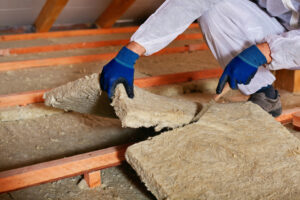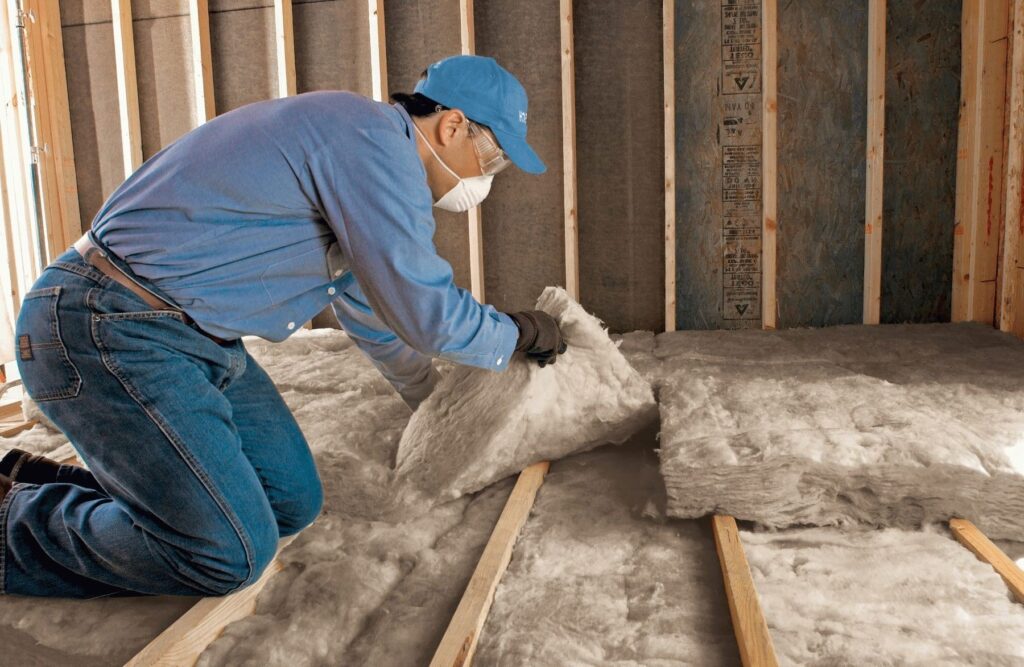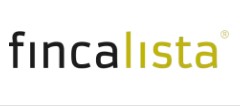When upgrading your home insulation, it’s important to focus on achieving consistent indoor temperatures throughout the year. Proper insulation helps maintain warmth during the colder months and keeps your home cool in the summer. The key to achieving this lies in choosing the right materials, installation techniques, and understanding the technical specifications that can influence your home’s energy efficiency.
This guide will explore the various types of insulation available, the factors to consider when choosing the best option for your home, and some practical advice on how to enhance comfort and reduce energy costs. We’ll also answer some common questions about home insulation to help you make an informed decision.
Types of Home Insulation
There are various types of insulation materials available, each with distinct advantages and disadvantages. Below are the most common options, along with their characteristics.
Fiberglass Insulation
Fiberglass is a popular choice due to its affordability and ease of installation. It comes in batt, roll, and loose-fill forms, making it versatile for different spaces.
| Property | Fiberglass Insulation |
| R-Value (per inch) | 2.9 – 3.8 |
| Installation Method | Batt, roll, or loose-fill |
| Moisture Resistance | Moderate |
| Cost per Square Foot | $0.40 – $1.00 |
| Lifespan | 20-30 years |

Upgrade Your Home Insulation for Consistent Indoor Temperatures
Spray Foam Insulation
Spray foam insulation solutions provide superior air sealing, making it ideal for preventing drafts and maintaining consistent temperatures.
| Property | Spray Foam Insulation |
| R-Value (per inch) | 3.5 – 6.5 |
| Installation Method | Spray applied |
| Moisture Resistance | High |
| Cost per Square Foot | $1.00 – $3.00 |
| Lifespan | 20+ years |
Cellulose Insulation
Made from recycled paper, cellulose is an eco-friendly choice. It performs well in attics and walls.
| Property | Cellulose Insulation |
| R-Value (per inch) | 3.2 – 3.8 |
| Installation Method | Loose-fill or blown-in |
| Moisture Resistance | Moderate |
| Cost per Square Foot | $0.60 – $1.50 |
| Lifespan | 20 years |
Rigid Foam Insulation
Rigid foam boards offer high R-values and are commonly used in areas requiring moisture resistance, such as basements or exterior walls.
| Property | Rigid Foam Insulation |
| R-Value (per inch) | 3.6 – 5.0 |
| Installation Method | Boards or panels |
| Moisture Resistance | High |
| Cost per Square Foot | $0.75 – $2.50 |
| Lifespan | 25+ years |
Mineral Wool (Rock Wool) Insulation
Mineral wool offers excellent fire resistance and soundproofing properties, making it ideal for areas requiring extra safety features.
| Property | Mineral Wool Insulation |
| R-Value (per inch) | 3.0 – 3.3 |
| Installation Method | Batt or loose-fill |
| Moisture Resistance | High |
| Cost per Square Foot | $1.00 – $2.00 |
| Lifespan | 30+ years |
Things to Consider Before Making a Decision
Before selecting the best insulation for your home, consider the following factors:
1. Climate Zone
Your local climate plays a significant role in determining which insulation will be most effective. For example, spray foam insulation may be ideal for cold climates due to its superior air sealing properties.
2. Budget
Some types of insulation, such as spray foam, can be more expensive upfront but provide long-term savings due to their higher energy efficiency. Consider both initial and long-term costs when making a decision.
3. Installation Complexity
Certain types of insulation, like spray foam or cellulose, require professional installation. DIY options like fiberglass batt insulation can save money on labor but may not be as effective at preventing air leaks.
4. Health and Safety
Some insulation materials, such as fiberglass, can irritate the skin or lungs during installation. Always wear protective gear, and ensure proper ventilation during installation. Consider non-toxic options like cellulose if health is a concern.
5. Environmental Impact
Eco-friendly materials like cellulose or cotton insulation are good options for those looking to reduce their carbon footprint. Make sure to verify the sustainability of the materials used.
Comparison of Insulation Materials
Here’s a quick comparison of the different insulation types, considering various performance factors.
| Insulation Type | R-Value (per inch) | Moisture Resistance | Fire Resistance | Cost per Square Foot | Lifespan |
| Fiberglass | 2.9 – 3.8 | Moderate | Moderate | $0.40 – $1.00 | 20-30 years |
| Spray Foam | 3.5 – 6.5 | High | Moderate | $1.00 – $3.00 | 20+ years |
| Cellulose | 3.2 – 3.8 | Moderate | Low | $0.60 – $1.50 | 20 years |
| Rigid Foam | 3.6 – 5.0 | High | High | $0.75 – $2.50 | 25+ years |
| Mineral Wool | 3.0 – 3.3 | High | High | $1.00 – $2.00 | 30+ years |

Upgrade Your Home Insulation for Consistent Indoor Temperatures
Common Questions
How can I improve the energy efficiency of my home through insulation?
Upgrading your insulation helps improve energy efficiency by preventing heat transfer. The best options for improving energy efficiency include spray foam and rigid foam, which offer high R-values and excellent air sealing properties.
How do I know if my home needs an insulation upgrade?
If your home experiences fluctuating indoor temperatures, drafts, or high energy bills, an insulation upgrade could improve comfort and reduce energy consumption. A professional energy audit can identify areas of improvement.
What’s the difference between R-value and U-value?
R-value measures an insulation material’s resistance to heat flow. The higher the R-value, the better the material insulates. U-value is the inverse, representing the rate of heat transfer, where a lower U-value indicates better insulation.
Can I install insulation myself?
Some insulation types, such as fiberglass batt, can be installed by DIYers, but other materials like spray foam and cellulose require professional installation due to their complexity.
Make the Right Decision
Upgrading your home insulation can lead to significant energy savings, improved comfort, and a more consistent indoor temperature throughout the year. By considering your climate, budget, and insulation options, you can make an informed decision about which material best meets your needs. Always consult with a professional if you’re unsure about the best choice for your home.
FAQ
1. Is spray foam insulation worth the cost?
Yes, although it can be more expensive, spray foam provides excellent energy efficiency and long-term savings through reduced heating and cooling costs.
2. How long does insulation last?
Most insulation materials last for 20-30 years. Spray foam and rigid foam can last even longer with minimal maintenance.
3. Can I use insulation in my attic to control indoor temperature?
Yes, insulating your attic is one of the most effective ways to regulate indoor temperatures and prevent heat loss in winter and heat gain in summer.
4. Does more R-value always mean better insulation?
Not necessarily. The R-value needs to be balanced with proper installation. Even high R-value materials won’t perform well if installed improperly.
5. Are eco-friendly insulation materials effective?
Yes, eco-friendly options like cellulose or cotton insulation can be just as effective as traditional materials, especially in terms of air sealing and energy efficiency.






